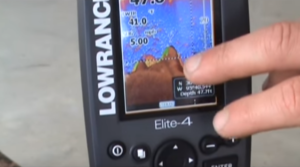Last updated on February 10th, 2024
Fishfinders are incredible devices that fishers, anglers, divers, and water enthusiasts love because they use them to locate fish in the water. They utilize sound navigation and ranging (SONAR) technology systems to display the location of the fish on a CRT or LCD digital screen.
Also known as sounders, they shoot out sound waves in water and measure the strength and speed when they bounce back. The machine displays readings like “echoes” on the screen, and they include systems like electronic compasses, GPS, and radar for enhanced reliability.
The display screen shows the presence of the fish with a symbol of a fish while others have arches that depict the fish’s presence. There are different types of fish finders available on the market and doing due diligence helps to find one that suits your needs. Below you will uncover tricks and techniques that you can use to read your device to get the most out of it.
After properly installing the product of your choice, the next logical step would be to learn how to read a fish finder well. Reading devices may at first prove to be a bit problematic, but after getting the hang of it, it becomes easy.
It does not help that you must know how to interpret the data it shows to know the exact location of the fish. The reflection of the SONAR reading is displayed from right to left; This way the last reading will be on the right side of the screen.
Most brands come with a depth finder that makes it possible for users to know the depth of water below their vessel. The information helps you know the kind of fish that thrive in a particular environment and what to expect beneath your boat.
Most machines also display the details in meters rather than feet, and it is usually on the top left of the screen.
Water temperature is something else that you can find out using the device as you uncover how to read a fish finder.
It comes in handy for people searching for particular species because some prefer cooler environments while others do well in warm water. Armed with the above information, you can start searching for fish and observing various conditions some types of fish favor.
Fishfinders also come with speed sensors that relay how fast your vessel is moving something that you can also use for fishing. Some products support grayscale i.e. white & black and other colors where color relates to the strength of the echo that returns.
It implies that the color will be stronger/darker if a stronger echo returns whereas stationary objects are typically reflected as lines. If there are no fish forms, present, the sea animals are represented by an arch, whereas bigger fish are shown by larger arches.
To understand how to use your fish finder well, set it up and move around water slowly while studying the reactions. It will allow you to get used to looking at the display, familiarizing yourself with what it can and cannot do. After mounting the fish finder on the boat, using the right speed, manipulating the screen and you are ready to go.






